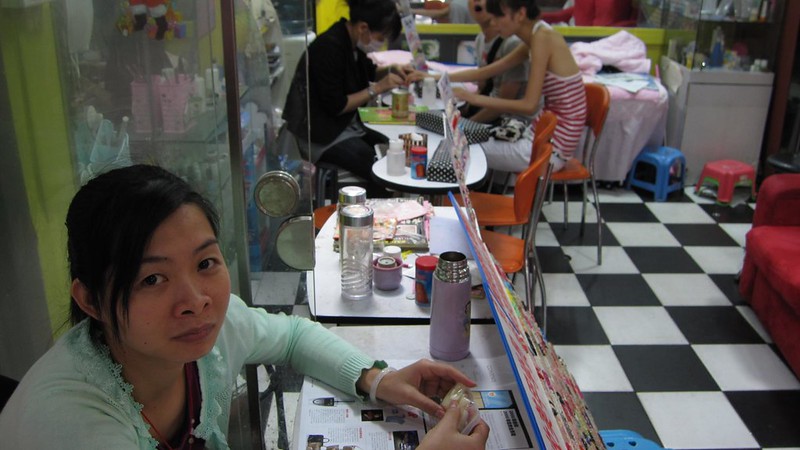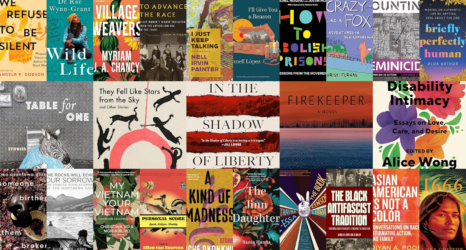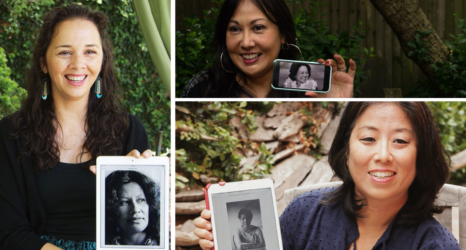When my parents first came to the United States from Vietnam, it was the prospect of rebuilding a life here to support our family that fueled them.
This refugee hustle, materialized through opening a nail salon and working seven days a week so my siblings and I could go to college, is the legacy I carried with me as I walked up to receive my diploma from Stanford. But this American Dream did not take into account that identifying as Asian/Pacific Islander in the United States means facing xenophobia and racism—even where we live in the Bay Area.
COVID-19 has not only re-surfaced this discrimination, but has also highlighted other inequities within Asian American communities. In this time when we are facing record unemployment and xenophobia in the midst of a pandemic, I’m thinking of the harm the Model Minority Myth has done to mask income inequalities and health disparities for Asian American and Native Hawaiian and Pacific Islanders (AANHPIs), and what a guaranteed income could offer to our communities.
We’ve been here before. The hate crimes committed in the past months have reminded me how in 1982, Vincent Chin was murdered because he was misprofiled as Japanese and blamed for Japan’s rising economic success in a time when Detroit was facing record unemployment rates and a failing domestic auto industry.
Then and now, economic turmoil is a cover for a deeper-rooted issue of xenophobia, casting all Asian American and Pacific Islander Americans as the same.
The harmful political rhetoric and government actions today remind me of how, in the early 1900s, government officials denied the emergence of plague in San Francisco Chinatown for fear of economic repercussions, and chose instead to follow racist caricatures of Chinese people as disease-ridden, quarantining only residents of Chinatown in squalid housing conditions that exacerbated the spread of plague.
These racist incidents and ineffective policy responses due to fear of economic repercussions mirror what is happening today in “post-racial America.” My family has fared okay so far, but it is not out of line to worry, particularly with Governor Newsom’s recent comment that a nail salon was the source of COVID spread in California and fears of that news stoking retaliation against Asian American nail salon workers.
It is difficult for me not to see health tied to income and work at this time, particularly with my parents and their nail salon. My parents’ experiences not having consistent healthcare prior to the Affordable Care Act and often relying on my siblings or me to serve as interpreters for their appointments mirror how exorbitant healthcare costs, coupled with cultural and language barriers, prevent many AANHPIs from accessing adequate healthcare coverage and preventative healthcare.
Even before the pandemic, nail salon workers—many of whom are Vietnamese Americans—were already struggling to breathe from toxic fumes in their workplace and faced increased health risks such as asthma, miscarriages, decreased lung function and cancer. Now, their health conditions in the contexts of their working environments make them at greater risk for contracting a deadly case of COVID.

But my parents and other Vietnamese Americans are not alone in this. COVID-19 has only highlighted the income and health inequities that have long-existed, particularly in the AANHPI community.
Different immigration and resettlement experiences, in some cases in the aftermath of war, genocide and colonialism, have led to us being the most economically divided racial group. For example, 24 percent of Laotian Americans are low-income, a rate closer to other communities of color—such as 24 percent of Black communities and 28 percent of Latinx communities—than the aggregate average of Asian Americans considered low income.
When these income levels are viewed in tandem with health outcomes prior to the pandemic, liver cancer rates for Laotian men are 66 percent compared to 6 percent for white men. Now, Laotian Americans who work in the meatpacking industry face greater risk of being infected with COVID due to hazardous working conditions.
Similarly, Pacific Islanders such as Tongan Americans—who have higher poverty rates at almost 20 percent and higher uninsured rates at 22 percent—have found themselves more at risk for COVID due to pre-existing conditions such as hypertension and diabetes. More Pacific Islanders are dying from COVID in California compared to other racial groups, at a rate of 14 percent, even while making up less than 1 percent of the state’s population.
It’s a hard question that Vietnamese nail salon workers like my parents, Laotian workers in meatpacking factories, Tongan essential workers and others face of choosing their health or making a living, a no-win scenario that has already had terrible implications on their health. As they contend with working in professions that require close contact with customers, their health should not be dependent on the lottery of where they live and the varying policies each government has on re-opening.
Far from the stereotype of all Asian/Pacific Islanders being white collar workers and economically stable, our communities have undocumented workers, domestic workers, folks in the prison system or who are shuttled in ICE detention centers as a result of the school-to-prison-to-deportation pipeline and small business owners like my parents. They are all struggling to contend with the economic fallout, physical health risks and mental health risks from the pandemic, as well as the escalated fear that they may be targeted due to their race.
In the midst of this uncertainty, we have the responsibility to act. We need to make sure community-specific data is available to understand the disparities within AANHPI communities, to fill out the census to make sure we are all counted so that we receive funding for critical health, education and cash resources and that we have a seat at the table through political representation.
We need more research on experiences of AANHPI workers on a state and local level and need to develop effective policies addressing the intersection of income inequality and health, such as paid sick leave. But we can also go beyond what we’ve done before and offer new policy responses such as a guaranteed income.
“In the middle of catastrophe, in the middle of disaster, people—particularly people who have already suffered—see an opportunity to evolve to another stage of humanity.”
—Grace Lee Boggs
Grace Lee Boggs was one of the first Asian American activists I saw to consider a guaranteed income, and her words above hint at the opportunity we have to radically change the systems and norms we accept for granted. A guaranteed income would provide folks with the security they need, particularly now in this pandemic.
What a guaranteed income could look like in this moment is having not just one $1,200 check, but including recurring cash payments that will be critical to our communities. For my parents, this guaranteed income won’t magically erase the concerns around their health as they return to work, but it would help provide a much-needed cushion of economic security in this time as they navigate the costs of safely re-opening.
I feel hope in seeing how communities are taking things into their own hands, a nail salon collaborative fund to support workers who have lost their incomes, multilingual helplines to fill out unemployment and loan assistance forms, accurate medical information in different languages, and continuing work to provide culturally-sensitive care. But we also need policies like a guaranteed income and structural change to make sure these last.
It should not have taken the xenophobia and racism through COVID-19 to remind us of the work that needs to be done, but now that it’s at the forefront, it’s more pressing than ever to figure out solutions to alleviate ever-widening income and health inequalities. We need to continue advocacy highlighting that AAPIs are #EssentialNotExpendable, to highlight the risk many essential workers are taking to earn a living while facing discrimination, and to provide for their economic, physical and mental wellbeing.
It is not our job to be “American.” It is our job to recognize our worth and realize that our communities deserve better.





